- Navigate Banking Minefields: Don’t get caught in the fee frenzy! Learn how to steer clear of costly charges and make the most of your banking experience.
- Your Money, Your Rules: Take charge of your financial journey with these 7 essential tips that empower you to choose the right bank and save big.
- Banking Bliss Unveiled: Discover the secrets to selecting a bank that aligns with your goals, from maximizing interest rates to leveraging cutting-edge technology.
Selecting the right bank is a pivotal decision that impacts your financial well-being. With the multitude of options available today, it’s essential to make an informed choice to ensure you’re not falling into the trap of expensive fees and subpar services. In this guide, we’ll walk you through the key considerations and provide examples of both the positive and negative aspects of various bank features.
1. Research and Compare Fee Structures
One of the primary pitfalls that can drain your funds is the imposition of exorbitant fees. Different banks have varying fee structures, and it’s crucial to research and compare them thoroughly. For instance, some banks might charge monthly maintenance fees if your account balance falls below a certain threshold. Others could have high overdraft fees or ATM withdrawal charges.
Pros: Opting for a bank with transparent and reasonable fee structures can save you a substantial amount in the long run. Online banks, for instance, often offer fee-free accounts and reimburse ATM fees.
Cons: Traditional brick-and-mortar banks might have more extensive ATM networks, but they could also levy more fees. Always be wary of hidden charges buried in the fine print.
2. Evaluate Interest Rates on Savings Accounts
If you’re looking to park your savings, pay close attention to the interest rates offered by different banks. These rates determine how much your savings will grow over time.
Pros: Online banks and credit unions often offer higher interest rates on savings accounts compared to traditional banks. This means your money will work harder for you, even in a low-interest-rate environment.
Cons: Some banks might offer enticing introductory rates that plummet after a few months. Read the terms carefully to avoid unpleasant surprises.
3. Consider Online and Mobile Banking Services
The rise of technology has revolutionized banking, making online and mobile banking services indispensable. These platforms offer the convenience of managing your finances from anywhere, anytime.
Pros: Online banks typically have lower overhead costs, allowing them to provide better interest rates and lower fees. Moreover, their user-friendly apps make transactions, bill payments, and fund transfers a breeze.
Cons: Lack of physical branches can be a drawback if you prefer face-to-face interactions for complex financial matters. However, many online banks now offer customer support via phone or chat.
Related: The Rise of Decentralized Finance: What You Need to Know
4. Examine the ATM Network
Access to ATMs is a vital aspect of modern banking. Before choosing a bank, investigate the size and scope of their ATM network.
Pros: Larger banks tend to have extensive ATM networks, ensuring you can withdraw cash conveniently. Some online banks also partner with ATM networks to provide fee-free or reimbursed ATM withdrawals.
Cons: Smaller banks or credit unions might have limited ATMs, which could result in higher ATM fees if you need to use an out-of-network machine.
5. Review Customer Service Reputation
The quality of customer service can make or break your banking experience. Research online reviews and ask friends or family about their experiences with different banks.
Pros: Banks with stellar customer service ensure that your concerns are addressed promptly. This is particularly crucial when you encounter issues with your account or need assistance with complex transactions.
Cons: Some banks might have notorious customer service, leading to frustrating experiences and unresolved problems.
6. Assess Additional Services
Banks often offer additional services beyond basic checking and savings accounts. These could include credit cards, loans, investment opportunities, and financial planning services.
Pros: Having all your financial needs under one roof can simplify your financial management. Some banks might even offer preferential rates or discounts to existing customers.
Cons: While the convenience of bundled services is enticing, don’t overlook the fine print. Interest rates on loans or credit cards might not be as competitive as standalone financial institutions.
7. Investigate Overdraft Policies
Accidentally overdrawing your account can lead to hefty fees. Understand the overdraft policies of potential banks to avoid unnecessary charges.
NB : An overdraft is a type of loan that allows you to spend money from your bank account even when you don’t have enough funds to cover the transaction.
Pros: Some banks offer overdraft protection plans that link your checking account to a savings account or line of credit. This prevents overdrafts and associated fees.
Cons: Some banks might automatically enroll you in overdraft protection programs, which could lead to unexpected fees if you’re not vigilant about maintaining sufficient funds.
Also read: Market Alert: Federal Reserve Hikes Interest Rate by 25 bps, Now 5.25-5.5%
Types of Bank Account Overdrafts
- Authorized overdraft: This is an arrangement made in advance between the account holder and their bank. It allows the account holder to spend more money than they have in their account, up to a certain limit. Authorized overdrafts typically have lower fees than unauthorized overdrafts, but they can still be expensive.
- Unauthorized overdraft: This is an overdraft that happens when the account holder spends more money than they have in their account without having an authorized overdraft arrangement in place. Unauthorized overdrafts typically have higher fees than authorized overdrafts and should be avoided if possible.
Related: How to Take Control of Your Finances with Budgeting and Saving
In conclusion,
Choosing the right bank involves careful consideration of various factors, including fee structures, interest rates, technology offerings, customer service, and additional services. While online banks and credit unions often provide attractive features such as higher interest rates and lower fees, traditional banks offer the advantage of physical branches and larger ATM networks. By evaluating the pros and cons of different aspects, you can make an informed decision that aligns with your financial goals and preferences, ultimately avoiding expensive fees and ensuring a positive banking experience.

